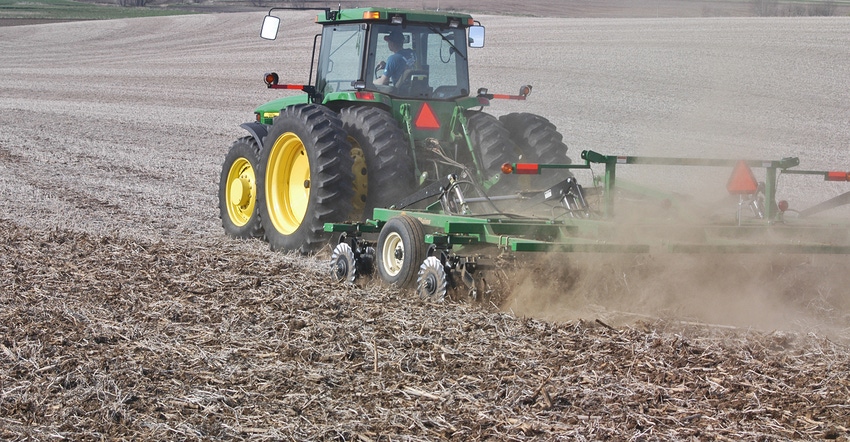August 31, 2018

When trying to decide which tillage tool to use this fall, consider these factors from University of Minnesota and North Dakota State University Extension specialists:
• Soil type. Sandier soils warm up and dry out faster than soils with more clay, says Jodi DeJong-Hughes, Extension tillage specialist at Michigan. "In the Corn Belt, sandier soils usually have a lower organic matter content and less inherent soil structure. These soils benefit from less tillage. Heavier, or higher clay soils, might need a little more tillage to bury some residue so that they will warm up faster in the spring," she says.
Don't rip or use a subsoiler especially in heavy clay soil, advises Dave Franzen, NDSU Extension soils specialist. "You might think the ripper will penetrate the clay and the water will drain through it. But this isn't true in many areas," he says. "In the Red River Valley, for instance, the clay pan is 50- to 200-feet thick."
Deep tillage will not make the water go away. It will allow more water to penetrate and produce a soil that is similar to a thin pudding. It will also dilute organic matter, which is already diluted in many areas, and will bring up lime and salts from deeper depths. Sub-soiling is a very poor soil management technique in our region, and in many fields it can be destructive. Wet-dry and freeze-thaw cycles in our soils largely take care of deeper spring/harvest compaction."
• Crop rotation. If you have a two or three-year rotation (corn-soybeans, corn-soybeans-wheat), a less-aggressive tillage pass can be very effective at residue management, DeJong-Hughes says. Many different tillage choices are available. However, if you are in the third year or more of continuous corn, there are fewer choices of tillage implements that can handle heavy residue. "While it is possible to be successful with strip till or ridge till in continuous corn, some farmers do not want to make that change," Hughes says. "Other choices include disk ripping and moldboard plow. If you are going to use a moldboard plow, choose fields with little or no slope. The moldboard plow has the highest rate of soil erosion and you don't want to see your field's best asset being blown or washed away."
• Soil moisture. If the soil is too wet for proper soil fracturing in the fall, you may be creating more damage to the soil than benefiting from the residue incorporation, according to DeJong-Hughes. "If the soil is drier on top but wet below and you are going to till this fall, make sure to shallow up the shanks or disks so that you are not smearing the wetter layer of soil," she says. "A smeared soil will need an extra pass or two in the spring to break up the restrictive layer created the previous fall."
• Slope. If your fields have over a 3% slope, minimize the depth and intensity of the tillage pass. Some farmers will not till the tops and sides of slopes in the middle of the fields, which leaves the residue to protect the delicate soil, DeJong-Hughes says.
Sources: U of M, NDSU
You May Also Like




